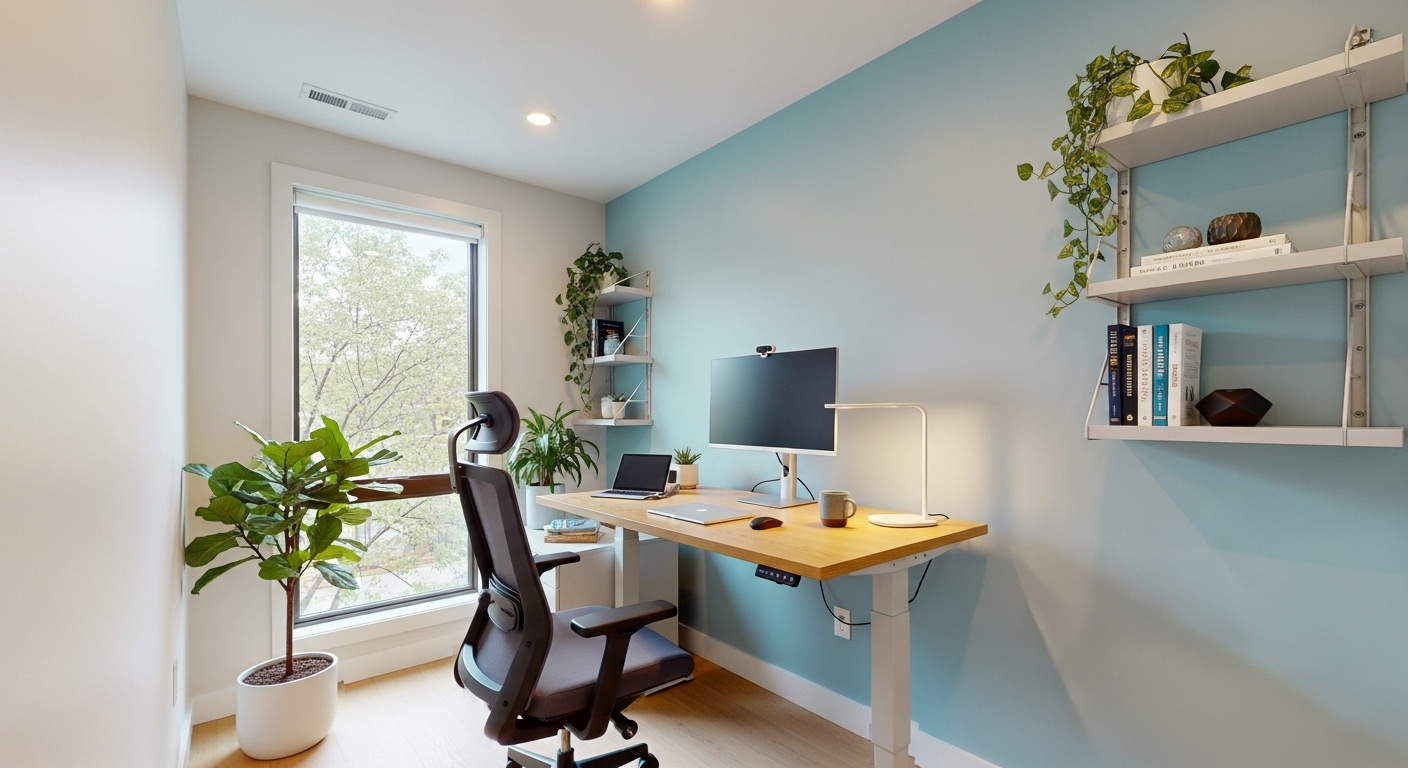The sudden shift to remote work felt like a dream for many professionals. Gone were the long commutes, rigid office hours, and formal dress codes. In their place was the promise of flexibility, autonomy, and a perfect work-life balance. However, the reality has proven to be more complex. Without the physical separation of an office, the lines between professional duties and personal time can blur into a single, unending day. This lack of structure often leads to burnout, decreased productivity, and a pervasive sense of being ‘always on.’ The key to reclaiming control and truly thriving in a remote setting isn’t about finding a perfect, static balance, but about establishing a sustainable daily rhythm. This post will guide you through creating a structured yet flexible routine that supports deep work, fosters connection, protects your personal time, and ultimately brings both success and sanity back into your remote work life. We will explore the essential components, from crafting a morning launch sequence to designing a restorative evening wind-down.
Crafting your morning launch sequence
Without the daily commute to act as a buffer, it’s dangerously easy to roll out of bed and straight into work mode, checking emails before your first cup of coffee. This reactive start can set a stressful tone for the entire day. The solution is to create a ‘morning launch sequence’—a deliberate routine that replaces your old commute and prepares your mind for the day ahead. This isn’t about adding more tasks to your morning; it’s about being intentional with your time. Instead of opening your laptop immediately, dedicate the first 30 to 60 minutes to activities that energize you. This could be a brisk walk outside, a short meditation session, journaling, or reading a chapter of a book. The specific activity is less important than the consistency of the ritual. This practice creates a powerful mental separation, signaling to your brain that it’s time to transition from personal time to professional focus. By starting the day on your own terms, you take control of your schedule from the outset, fostering a sense of calm and purpose that will carry you through your tasks more effectively than a caffeine-fueled, email-induced panic ever could. Think of it as a mental commute; you are still traveling to ‘work,’ but the journey is internal, mindful, and designed entirely by you.
Mastering the art of deep work blocks
One of the greatest advantages of remote work is the potential for uninterrupted focus, yet it’s an opportunity that is often squandered. The constant barrage of notifications from chat apps, emails, and social media creates a state of perpetual distraction, preventing the deep, concentrated work required for complex problem-solving and creativity. To counter this, you must architect your day around ‘deep work blocks.’ This involves scheduling specific, non-negotiable periods in your calendar—typically 60 to 90 minutes—dedicated to your most important task. During these blocks, it’s critical to eliminate all potential distractions. This means closing unnecessary browser tabs, putting your phone in another room, and setting your status on communication platforms to ‘do not disturb.’ The Pomodoro Technique, which involves working in 25-minute focused intervals with short breaks in between, can be an excellent way to train your focus muscle. Furthermore, your physical environment plays a crucial role. A dedicated workspace, even if it’s just a corner of a room, helps signal to your brain that it’s time to work. Investing in an ergonomic chair and ensuring good lighting can also significantly impact your ability to concentrate for extended periods. By intentionally scheduling and fiercely protecting these blocks of time, you shift from a reactive mode of constantly responding to stimuli to a proactive mode of focused creation.
The pulse of connection: mastering asynchronous communication
When teams go remote, the knee-jerk reaction is often to replicate the in-office environment with back-to-back video calls. This leads to ‘Zoom fatigue’ and a fragmented workday where there’s little time for actual work. The key to effective remote collaboration lies in embracing asynchronous communication. This means shifting the default from instant responses to thoughtful, well-documented communication through platforms like Slack, Asana, or Twist. Instead of calling a meeting to ask a simple question, a well-crafted message or comment on a project board allows colleagues to respond when it fits into their own workflow, preserving their deep work blocks. Mastering this skill requires a commitment to clarity and context. When you send a message, provide all the necessary background information, links, and specific questions so the recipient can understand and respond without a dozen follow-up queries. This approach not only boosts individual productivity but also fosters a more inclusive environment for team members in different time zones. It creates a written record of decisions and discussions that can be easily referenced later. While real-time meetings are still essential for brainstorming, complex problem-solving, and team bonding, making asynchronous communication your default will dramatically reduce meeting fatigue and create a calmer, more productive work rhythm for everyone.
Building digital boundaries to reclaim your time
When your home is also your office, the workday can easily bleed into evenings and weekends. The absence of a physical departure from a workplace means you have to create a virtual one. Establishing firm digital boundaries is non-negotiable for long-term sustainability in remote work. This starts with defining clear work hours and, most importantly, sticking to them. At your designated end time, begin a ‘shutdown ritual.’ This could involve reviewing your accomplishments for the day, planning your top priorities for tomorrow, and then decisively closing your laptop. The act of physically shutting down your computer is a powerful psychological cue that the workday is over. To reinforce this boundary, turn off work-related notifications on your phone and other devices. If you use the same computer for personal and professional use, consider creating separate user profiles to create a digital separation. Resisting the urge to check email ‘just one more time’ in the evening is crucial. As a quote from author Cal Newport suggests,
‘Your mind, in the moments after you wrap up your work, is a fragile thing. It needs a gentle transition into the evening.’
By creating these clear-cut transitions, you give your brain the permission it needs to fully disconnect, rest, and recharge, which is essential for preventing burnout and maintaining high performance over the long run.
Combating the echo chamber: strategies for social connection
While the solitude of remote work can be a boon for productivity, it can also lead to significant feelings of isolation and loneliness. The spontaneous ‘water cooler’ conversations and casual team lunches of office life are absent, and without them, it’s easy to feel disconnected from your colleagues and the company culture. Combating this requires a proactive and intentional approach to building social connections. Don’t wait for connection to happen; schedule it. Organize regular, informal video calls with teammates that are explicitly not about work. These ‘virtual coffee chats’ can be used to discuss hobbies, weekend plans, or anything else that helps you get to know each other as people, not just as colleagues. Participate actively in non-work-related chat channels if your company has them. Beyond your immediate team, it’s important to build a broader professional and social network. Consider joining online communities related to your industry or interests. On a local level, working from a coworking space once or twice a week can provide a change of scenery and opportunities for social interaction. Finally, don’t neglect your in-person social life. Make firm plans with friends and family to ensure you’re getting regular social fulfillment outside of a work context. This deliberate effort to weave social touchpoints into your week is vital for mental health and overall job satisfaction.
The evening wind-down: designing a restorative end to your day
Just as a morning launch sequence sets a positive tone for the day, an evening wind-down ritual is essential for truly disconnecting and ensuring restorative rest. After you’ve completed your shutdown ritual and stepped away from your workspace, the goal is to shift your mental state from ‘doing’ to ‘being.’ This period, in the one to two hours before sleep, should be dedicated to activities that relax and de-stress your mind and body. Crucially, this often means stepping away from screens. The blue light from phones, tablets, and televisions can interfere with melatonin production and disrupt sleep quality. Instead, opt for analog activities. Reading a physical book, listening to calming music or a podcast, light stretching or yoga, or engaging in a hobby like drawing or knitting can help quiet the mental chatter from the workday. Spending quality time with family or pets can also be a powerful way to decompress and reconnect with what matters most outside of work. This intentional disengagement is not a luxury; it’s a critical component of your remote work rhythm. It allows you to process the day, release lingering stress, and prepare for a night of deep sleep, which is the ultimate foundation for productivity, creativity, and well-being for the day to come. By bookending your day with intention, you create a complete, sustainable cycle of focus and rest.
Ultimately, thriving in a remote work life is an act of intentional design. It’s not about replicating the structure of an office but about creating a personal, sustainable rhythm that aligns with your unique needs and work style. The freedom of remote work is only truly realized when it’s supported by a framework of healthy habits. By crafting deliberate morning and evening routines, you create essential buffers that separate your personal and professional selves. By mastering deep work blocks and asynchronous communication, you optimize your day for focus and collaboration, not for distraction and fatigue. Building firm digital boundaries becomes your new commute, allowing you to mentally ‘leave’ the office and be fully present in your personal life. Furthermore, by proactively seeking social connection, you combat the isolation that can undermine the benefits of remote work. These elements—routine, focus, communication, boundaries, and connection—are the pillars of a successful remote career. They transform the challenge of blurred lines into an opportunity to build a more integrated, fulfilling, and sustainable way of working and living. The power is in your hands to architect a remote work life that doesn’t just function, but flourishes.





